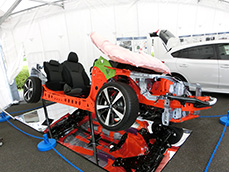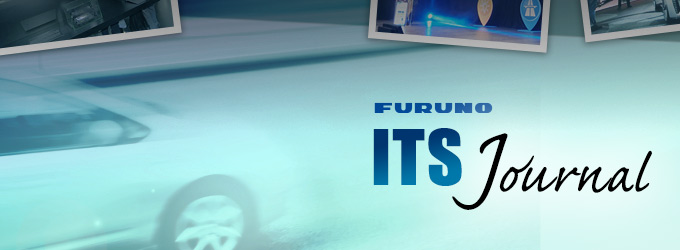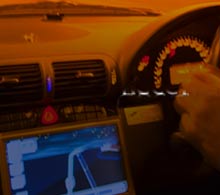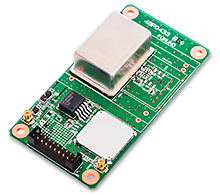Articles for ITS market Japanese car manufacturers starting to concentrate on strengthening the ADAS system
Nissan is aggressively promoting their autonomous driving system
In summer of 2016 the Japanese car manufacturers have strengthened their mass production of the ADAS (Advanced Driver Assistance System). Among them, Nissan is the most aggressive manufacturer.
Nissan's autonomous driving system is named “ProPILOT”. The new Nissan “SERENA” is the first vehicle to adopt the “ProPILOT”. The autonomous driving system in the SERENA is currently just for same lane automatic driving. Nissan includes the advanced ADAS as their autonomous driving system and the plan is to deploy the same lane automatic driving in their car for 2016. Nissan plans to add multi lane automatic driving in 2018 with higher technology autonomous driving systems to follow in 2020.
Some media sources say “SERENA's ProPILOT is just for the same lane automatic driving. Because of this it should only be included in the ADAS category and should not be considered an autonomous driving system. Furthermore the naming could cause issues because of potential misunderstands to users that do not understand the difference between the ProPILOT specification and a completely autonomous driving system”. Nissan took objection to these media sources and said “In order to eliminate any misunderstanding, we have been educating and training all of our dealers thoroughly”.
One of the basic technologies Nissan is adopting for “same lane” automatic driving is the image recognition technology provided by Mobileye, a professional Israel image recognition company. Mobileye is also providing their image recognition related analytic technology to GM, Volvo and Audi. A monocular camera hardware is used with Mobileye's technology. The manufacturers of the monocular camera are large Western companies. Nissan is using TRW's American ZF product. Other car manufactures are using a millimeter wave radar plus a monocular camera for front environment recognition, however Nissan is using a monocular camera only.
Test ride media event reporting for the new SERENA
 The test ride using ProPILOT on the highway
The test ride using ProPILOT on the highway
 There are many exhibitions regarding ProPILOT at the Nissan headquarters showroom.
There are many exhibitions regarding ProPILOT at the Nissan headquarters showroom.
In the beginning of September the media test ride event for the new SERENA was held in Nissan headquarters. The test ride route was the Metropolitan Expressway and Yokohama area. I rode in the car and experienced the same lane automatic driving. The operation was very easy and required pressing just two buttons. First pressing the button on the steering and then pressing the set button.
The same lane automatic driving technology has two functions. One is following a forward car with a possible speed setting between 30 to 115 kilometers per hour. The second function is to keep car the driving in middle of the lane by recognizing the lane lines. Once this function is set when the car is being driven under 50 kilometers per hour, the function only allows engagement when following another car. When the car is being driven over 50 kilometers per hour, the function allows engagement regardless of following another car or not.
According to Nissan's engineer the same lane automatic driving function can be set for highway and local road driving, but the requirement for local roads are stricter than the highway. I operated on both during the test ride. When I was on the highway the setting engaged quickly, but when I was on the local road the setting took longer to engage. I asked the engineer for the local road requirements but he said he could not display it. However he told me that there is no difference regarding how the actual highway and local road recognition is done. Nissan uses image information from the camera only and does not use GPS or “around view” monitor information for the recognition solution. Nissan is currently working on the research and development for multi lane automatic driving and expects mass production in 2018. The engineer said “For multi lane automatic driving a millimeter wave radar is needed for lane changing capability”.
SUBARU deployed the “EyeSight” system and an airbag for pedestrians as standard equipment in their entry level model
 The prototype of the fifth generation “IMPREZA Sport”, SUBARU
The prototype of the fifth generation “IMPREZA Sport”, SUBARU
 The inside of the fifth generation “IMPREZA”, SUBARU. The display includes “EyeSight” support.
The inside of the fifth generation “IMPREZA”, SUBARU. The display includes “EyeSight” support.
 The “IMPREZA” standard equipment airbag for pedestrians is shown deployed.
The “IMPREZA” standard equipment airbag for pedestrians is shown deployed.
SUBARU is a company that has been leading the ADAS development in Japanese car manufactures. The ADA(Active Driving Assist)deployed in “Lancaster” in 1999 was their first ADAS system. Afterward they released their own advanced ADAS system named “EyeSight” which was very famous using the TV commercial catchphrase “collision avoidance car”. After 2010 SUBARU lowered the “EyeSight” price and set it as a DOP. It was very successful and sales of “EyeSight” increased rapidly.
The new “IMPREZA” was announced on July, 2016, will be released this fall and has “EyeSight” as standard equipment. According to a SUBARU engineer, the “EyeSight” deployed in the new “IMPREZA” is an improved version called “EyeSight version3”. One change is the distance setting between followed cars is improved. SUBARU tested it in Japan and found that thanks to this new improvement the car drove similar to an autonomous vehicle.
In the new “IMPREZA” the airbag for pedestrians is enabled when using “EyeSight”. This airbag deploys under the windshield when needed. It is designed to protect pedestrians who have contact with the hood after being struck by the front bumper because it opens outward, toward the pedestrians. Along with these safety features the price should also be attractive to buyers because the least expensive one is less than two million Japanese Yen.
The key point for next generation ADAS systems is “How to support the NCAP(New Car Assessment Program)”
Including the above mentioned Nissan and SUBARU, car manufactures have many sales in Western countries and are in the process of improving their ADAS systems. The reason is they need to support the NCAP’s collision standard. To Japanese car manufactures the biggest concern is the revisions to pedestrian protection that start from 2016 and 2018 by the European NCAP. The night pedestrian protection will be added to the revision in 2018. Because of the European NCAP the importance of pedestrian protection will also increase in the JNCAP, the Japanese NCAP and related assessments in the US. The Japanese car manufactures are working to include a completely autonomous driving system in their ADAS program in the future. They will also need to first evaluate each region’s requirements separately. The purpose of this assessment is different from other kinds of regulation like exhaust fumes, CO2 etc. The purpose is to provide useful information to consumers by reviewing each kind of test result held by the public institutions. Car sales are influenced by these assessments and can result in car manufacturer gains.
Writer introduction

Mr. Kenji Momota Automotive journalist
His major is the world automotive industry and he is also familiar with the energy industry, IT and the aging society problem as the related fields. He acts around the world based in Japan and USA and writes for the general magazines, the technology journals and the automotive related media etc.
He is also commentator of motor race and world's motor show on TV program based on his career of the driver of Indy Racing League and NASCAR. In recent years, he has been covering about a paradigm shift from developed countries to developing countries, the motorized vehicle like EV and the telematics.
FURUNO ITS Journal
Click here for the latest articles after 2022 (in Japanese)2022
- The "realistic" self-driving roadmap shown by the Japanese government and a hands-on report on the latest Subaru EyeSight X
- Will FCVs (Fuel Cell Vehicles) Become Popular? ~New Movement in Toyota and Honda~
- The 'Complete' online sales of new cars start in Japan. Will this new way of buying cars take root?
- Many Firsts! On-Site Report from Tokyo Auto Salon 2022 - The author, who knows what goes on behind the scenes, looks back on 40 years of history. -
2021
- "Moving toward zero traffic fatalities for four-wheeled and two-wheeled vehicles globally in 2050" ~Experience on Honda's latest safety technologies~
- Tsuneishi Shipbuilding's building and DX, an exclusive visit to the main factory
- Japan's Smart City: New Moves toward Practical Use
- When will self-driving buses (service cars) be put to "full-scale" practical use?
- Utilization vehicle data during disasters
- Toyota-led Connected Technology to Transform Commercial Vehicle Business -From light trucks to large trucks and buses-
- Toyota enters the connected car "Personalization" business
- Japanese automakers' carbon-neutral strategies swept up in ESG investment
- Drive experience of the latest autonomous vehicle models and advanced driving support systems
- Will carbon neutrality accelerate the trend to strengthen LCA (Life Cycle Assessment)?
- Semiconductor shortage exposes realities of the automotive industry
- Online Autonomous Driving Contest Enhancing development of Human Resources
2020
- What happens to CASE when gas cars are banned in Japan?
- When will Flying Cars be launched?
- Expectation vs. reality:Autonomous Driving in Japan
- V2X, Becoming increasingly important in autonomous driving
- Technology of Subaru “EyeSight X”
- Lifestyle-oriented French cars gain popularity in Japan
- Human-oriented smart cities are wanted
- MaaS and CASE, how would automotive industry change after COVID-19?
- The beginning of virtualization era, triggered by COVID-19
- Trend of EV shift and consumer demands
- TOYOTA Press conference about ADAS - Releasing algorithm for "sudden acceleration suppression during attempted sudden acceleration" free of charge -
- The Japanese automotive industry in 2020 - 3 turning points -
- "Using a smartphone while driving" and "Level 3 automated driving"
2019
- Motor show business model is at a turning point - Tokyo Motor Show Report -
- Commercialization and monetization of MaaS - ITS World Congress Singapore Report -
- Android Automotive pays attention to V2X - Report from the Frankfurt Motor Show 2019 in Germany -
- Automobile Distribution Revolution and DCM (Data Communication Module)
- Connected business potential and newly proposed "eMaaS" by Honda
- 5G services for practical use are multiplying
- Connectivity technologies attracting attention due to frequent traffic accidents
- Shanghai Motor Show report -SUV, EV, Automated car & 5G-
- Drone Business roadmap and updates to Michibiki (Quasi-Zenith Satellite System)
- MaaS (Mobility as a Service) "town development." Full-scale promotion for a national project
- CES organizer states "Data Period in 2020s." Transformation of the Automotive Industry in CES, US "-CES2019 Report-"
- "Return to Origin" directed towards the age of change, automatic operation and connectivity
2018
- New proposal for Private Car Automated Driving Level and other Hot 5G Technology Topics
- Standardized EV charging infrastructure concerns in Europe, US, Japan and China - Kobe EVS 31 field report -
- Touring a pure car carrier and a test drive of the latest hybrid car
- Planning stage products are exhibited at the newly established visualized mobility service "TOYOTA MOBILITY SHOWROOM".
- Potential “Community Car-share” program promoted by local residents
- CES Asia Report 2108
- Companies attempt new Vehicle-to-Infrastructure communications, including traffic volume measurements and vehicle positioning. -ITS Asia Pacific Forum in Fukuoka-
- Geneva show in Switzerland. Flying cars and MaaS (Mobility as a Service) were hot topics.
- EV (Electric Vehicle) proposals by country
- MaaS competition through service mobilization, M & A and technical field collaboration is accelerating. - The CES 2018 Report -
2017
- Big data’s initiative and fight for the automotive industry. Cooperation among companies becomes increasingly important.
- Connected car and road-to-vehicle communication automatic operation
- ETC (Electronic Toll Collection) and ETC2.0. Current situation and projected future
- Rapid development of sharing economy
- Germany is first to recognize level 3 automated driving
- ITS EU 2017 Field Reports -Automatic Operation and the eCall-
- From Infotainment to ITS, the competitive area is spreading in the car big data industry.
- GTC (GPU Technology Conference) Report and the de facto standardization of AI (artificial intelligence)
- Renesas' new challenge! "e-AI Solution" and "Renesas Autonomy"
- The Automobile industry is shifting from a manufacturing industry to a service industry.
- The movement toward accident countermeasures for aging drivers in Japan
- Fusion of ride sharing and fully automated driving is advancing in the USA.
2016
- Overview of the Quasi-Zenith Satellite System (QZSS) and advancements toward full-scale practical use including the Tokyo Olympic Games - G-space EXPO 2016 report-
- Japan’s automated driving project "SIP-adus" will be a large demonstration experiment.
- The International Home Care & Rehabilitation Exhibition. There were many car manufactures with exhibits booths at this show.
- Japanese car manufacturers starting to concentrate on strengthening the ADAS system
- A new movement of legislation for autonomous cars
- Cyber Security and “AGL”, the new OS for automotive are hot topics in the connected car industry
- “High precision 3D map” the key future of autonomous car and pedestrian dead reckoning
- Chinese “BAT” is accelerating their business in the EV (Electric Vehicle) market
- Tesla's original connection to Taiwan and the new transportation system technologies.
- "The main topic" of the Geneva Motor Show was how to strengthen "pedestrian protection"
- The probe data business is getting more competitive
- Reporting directly from the 2016 CES show "Data services will soon become the main revenue source of automotive industry"
2015
- Do the automated driving systems need the GNSS (Global Navigation Satellite System) ?
- ETC Version 2.0 is coming soon. A new service was announced at the Tokyo Motor Show and the possibility that is could be used as a device for older drivers.
- "Connected Horizon" and "eHorizon". Germany's leading parts supplier accelerates strengthening of "Big Data" for business



 The test ride car of the new SERENA at Nissan headquarters
The test ride car of the new SERENA at Nissan headquarters GPS/GNSS Receiver&Chips and Modules (positioning and timing)
GPS/GNSS Receiver&Chips and Modules (positioning and timing)